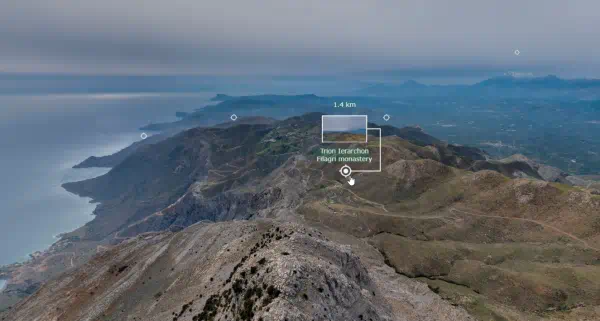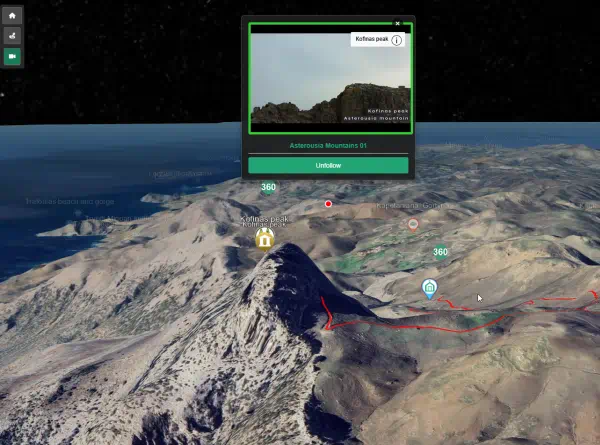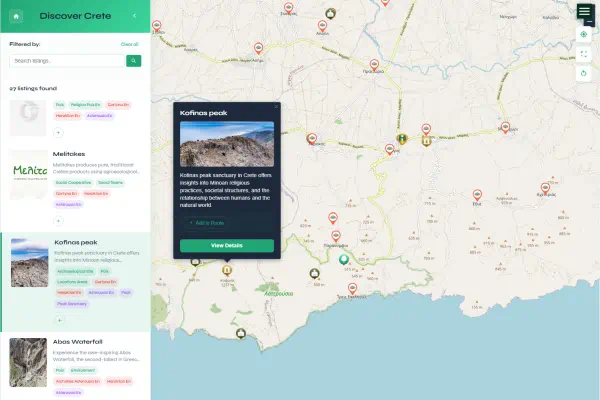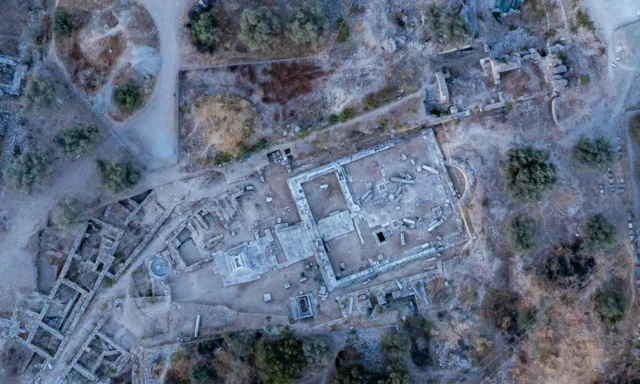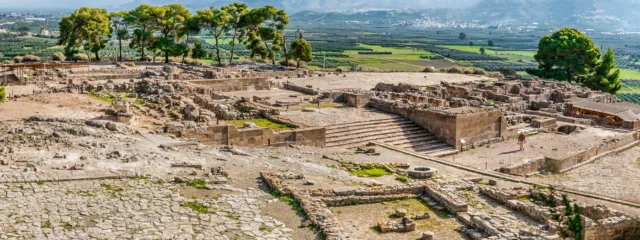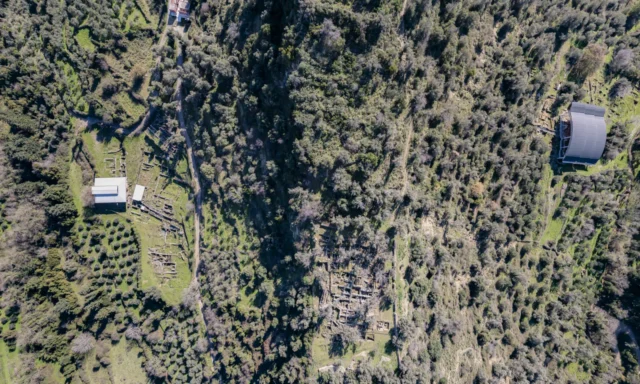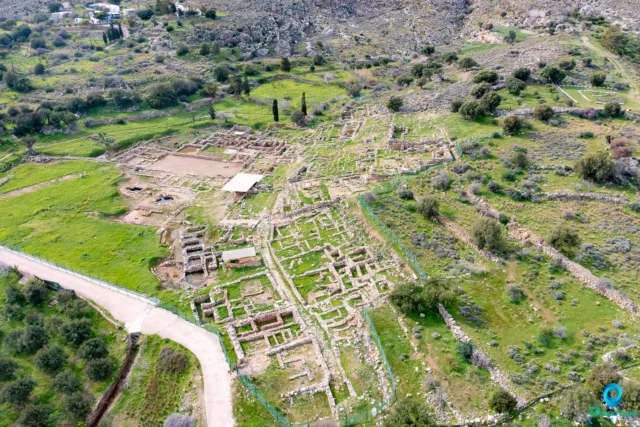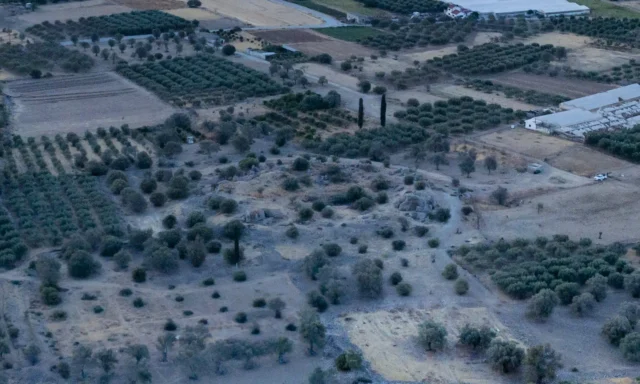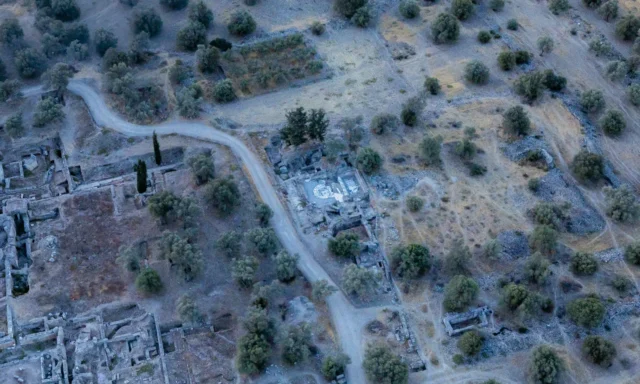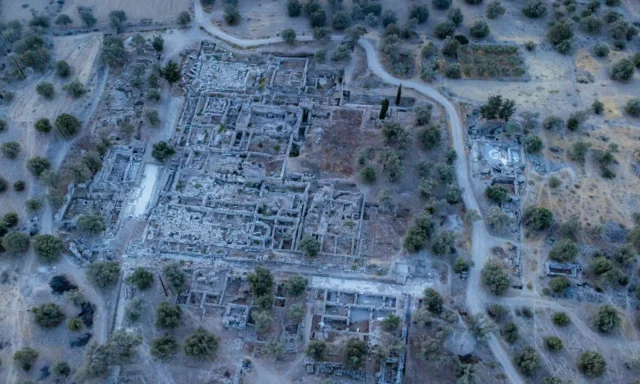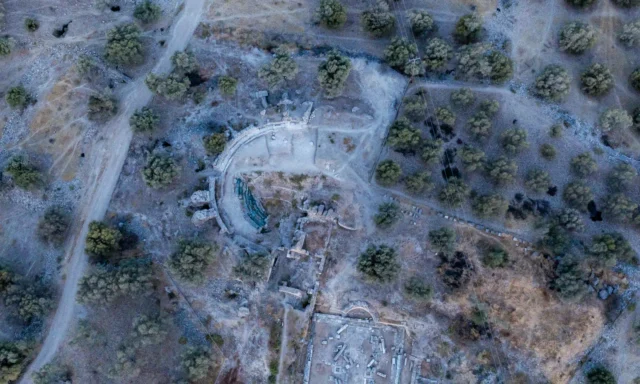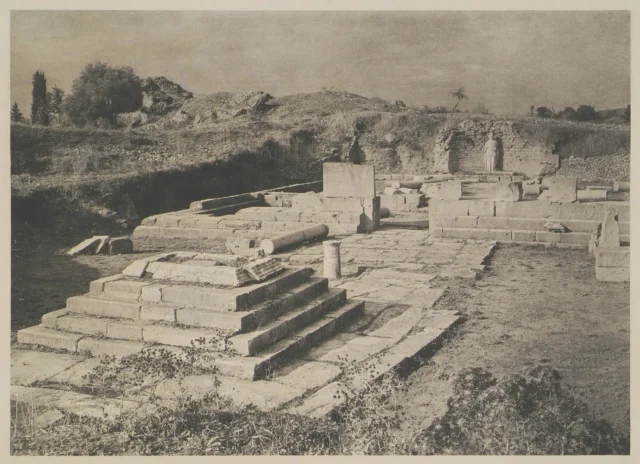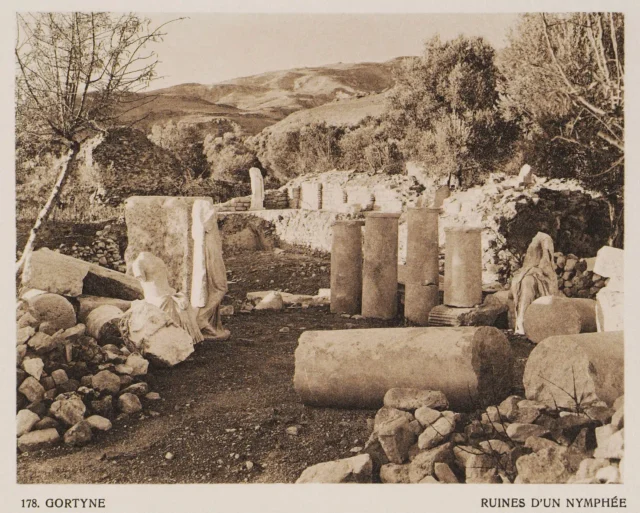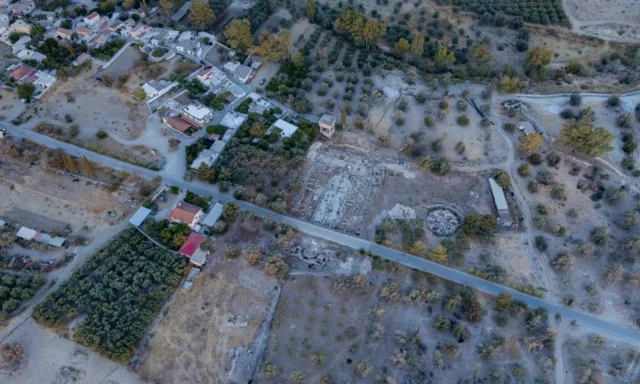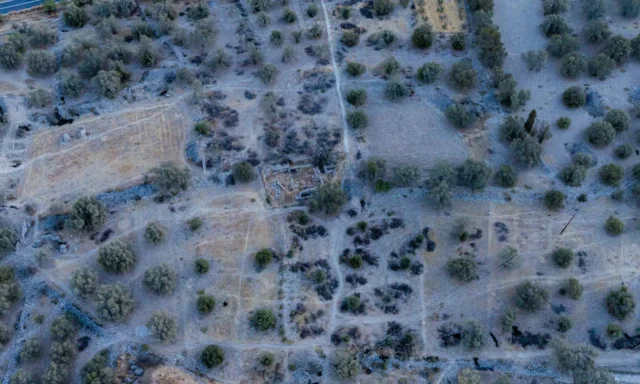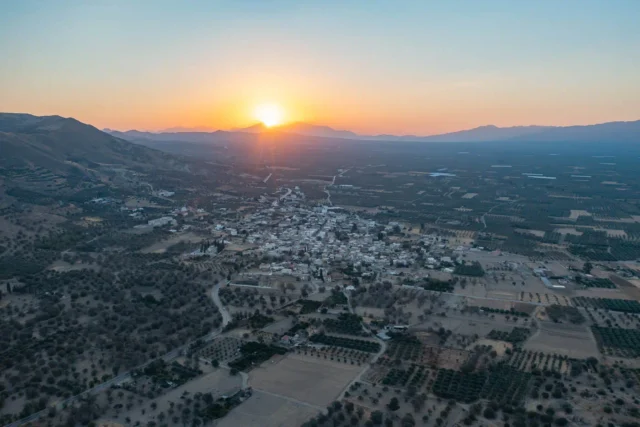The Circus at Gortyn was a significant Roman spectacle complex, forming part of the comprehensive suite of entertainment venues in the city, which was the provincial capital of Crete and Cyrenaica.
Location and Context
The Circus was established at the southeastern boundaries of Gortyn. It was situated at the eastern end of the city, in a suburb that was separated by a stretch of the necropolis. This placement on the city’s periphery aligns with the common practice for large entertainment venues in Roman urban areas, which were often laid out in the outskirts to avoid extensive structural clearance and to minimize traffic congestion and noise. An aerial photograph of Gortyn shows the location of the circus alongside the odeion and amphitheater.
Construction and Architectural Features
The construction of the Circus is generally dated to the Severan period, which is approximately the early 3rd century CE. It was likely built around the same time as the amphitheater, also a Severan addition to the cityscape. The sources do not provide detailed architectural specifications such as dimensions, materials used, or specific features of its design.
Usage
The Circus was primarily used for circus games and racing. In the mid-4th century CE, the Expositio totius mundi et gentium specifically mentioned the “delights of circus games” at Gortyn. While gladiatorial games declined, racing may have continued in the grounds of the circus. Compared to amphitheaters, which had strict seating orders to reinforce social divisions, the circus likely featured looser seating arrangements, which might have made gender segregation less rigid, as observed in the Circus Maximus in Rome. The Circus could also have been a venue for musical performances or contests, similar to practices in Rome where such events took place in the Circus Maximus.
Historical Significance
The establishment of the Circus signifies a period of greatest expansion and intensive construction activity in Gortyn during the Severan period. Its presence, along with two theaters, two odeia, a stadium, and an amphitheater, highlights Gortyn’s development as a major provincial capital equipped with a full array of public entertainment venues, reflecting the city’s prosperity and adherence to Roman urban standards. The continued mention of circus games in the mid-4th century CE suggests the enduring importance of this type of spectacle in Gortyn, even as some Roman traditions were transforming.
Archaeological Site: Key Points
- Location: Southeastern boundaries of the city.
- Date of Construction: Generally dated to the Severan period (early 3rd century CE).
- Purpose: Primarily for circus games and racing.
- Seating: Likely had a looser seating arrangement compared to amphitheaters.
- Historical Reference: Mentioned in mid-4th century CE texts.
- Urban Development: Part of a large-scale public building program in Roman Gortyn.
Sources
-
Anna Kouremenos, 2016. Afterword: putting Crete on the Roman map, in: Jane E. Francis and Anna Kouremenos (Ed.), Roman Crete – New Prespectives. Oxbow Books, pp. 235–238.
-
Dodge, H., 2013. Amphitheaters in the Roman World, in: Christesen, P., Kyle, D.G. (Eds.), A Companion to Sport and Spectacle in Greek and Roman Antiquity. Wiley, pp. 543–560. https://doi.org/10.1002/9781118609965.ch37
-
Isabella Baldini Lippolis & Giulio Vallarino, 2013. Gortyn: from City of the Gods to Christian City, in: Ted Kaizer, Anna Leone, Edmund Thomas, and Robert Witcher (Ed.), CITIES AND GODS – RELIGIOUS SPACE IN TRANSITION. Peeters Publishers & Booksellers, pp. 103–119.
-
Karambinis, M., 2022. The cities of Crete under Roman rule (1st–3rd centuries AD). JGA 7, 233–268. https://doi.org/10.32028/jga.v7i.1716
-
Kelly, A.M., 2021. Staging Martyrdom in the Roman Amphitheater of Gortyna in Crete. Journal of Early Christian Studies 29, 121–158. https://doi.org/10.1353/earl.2021.0004
-
Manzetti, M.C., 2019. The Performances at the Theatre of the Pythion in Gortyna, Crete. Virtual Acoustics Analysis as a Support for Interpretation. Open Archaeology 5, 434–443. https://doi.org/10.1515/opar-2019-0027
-
Enzo Lippolis, 2016. Roman Gortyn: from Greek polis to provincial capital, in: Jane E. Francis and Anna Kouremenos (Ed.), Roman Crete – New Prespectives. Oxbow Books, pp. 155–174.

